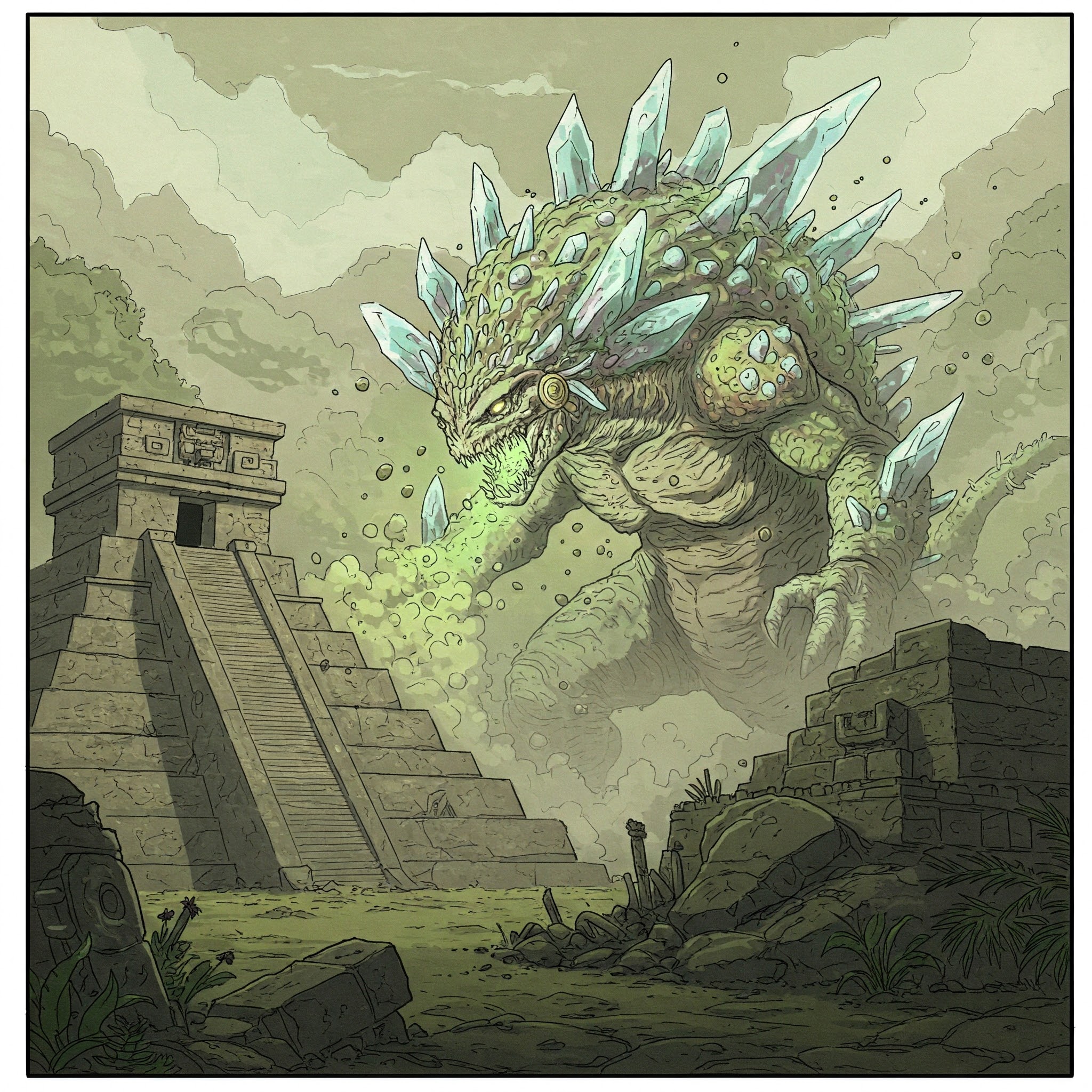· AI-Generated · 3 min read
Kukulkan
Dust motes danced in the ethereal glow of Kukulkan's spores as they drifted through the crumbling temple. The air thrummed with an otherworldly energy, a symphony of decay and nascent life. Ancient carvings seemed to writhe in the shifting luminescence, bearing silent witness to the titan's reign.

Monster: Kukulkan - The Spore Weaver
Its name comes directly from “Kukulkan”, the Mayan feathered serpent deity associated with resurrection and wind. This name was chosen due to the monster’s ability to spread spores that bring both decay and new life, mirroring the cyclical nature of the wind and the concept of rebirth.
Top 3 Powers:
- Aetheric Spore Cloud: Kukulkan can exhale a dense cloud of bioluminescent spores that carry a myriad of effects, ranging from rapid cellular decay and hallucinations to accelerated plant growth and temporary biological enhancements in other organisms. The effects vary based on the spore composition, which Kukulkan can subtly control.
- Crystalline Exoskeleton Manipulation: The crystalline spikes adorning Kukulkan’s body are not merely passive defenses. It can rapidly grow, retract, and even launch these razor-sharp structures as projectiles with surprising accuracy. Additionally, it can channel a low-frequency hum through them, capable of disrupting electronic devices and causing disorientation in living beings.
- Subterranean Adaptation: Kukulkan possesses a natural affinity for the earth. It can burrow through stone and soil with ease, creating intricate tunnel systems and ambushing its foes from beneath. This ability also allows it to tap into geothermal vents for bursts of energy.
Backstory:
Kukulkan’s origins are shrouded in ancient mystery, intertwined with the legends of the Mayan civilization. Unlike other kaiju born from nuclear devastation or cosmic anomalies, Kukulkan is believed to be a manifestation of the earth’s primal forces, awakened from a millennia-long slumber.
According to Mayan lore, Kukulkan was once a benevolent entity, a guardian of the delicate balance between life and death. It dwelled within the deepest cenotes, sacred gateways to the underworld, where it absorbed the earth’s raw energy. However, as human civilization flourished and began to disrupt the natural order, a corruption seeped into the cenotes, tainting Kukulkan’s essence.
This corruption, a miasma of unchecked ambition and environmental disregard, twisted Kukulkan’s power. The spores, once harbingers of renewal, became vectors of decay and chaos. The crystalline spikes, previously conduits of life energy, turned into weapons of destruction. Kukulkan, once a protector, became a force of nature, a living embodiment of the earth’s wrath.
The ancient Mayans, witnessing this transformation, recorded their fear and awe in intricate carvings and glyphs. They saw Kukulkan as both a punishment and a warning, a reminder of the delicate thread that connects humanity to the natural world. The name “Kukulkan,” once a symbol of divinity, became synonymous with both creation and destruction, a duality that continues to define the kaiju’s existence. It is said that Kukulkan slumbers and awakens in cycles, its emergence heralding periods of great upheaval and change.



